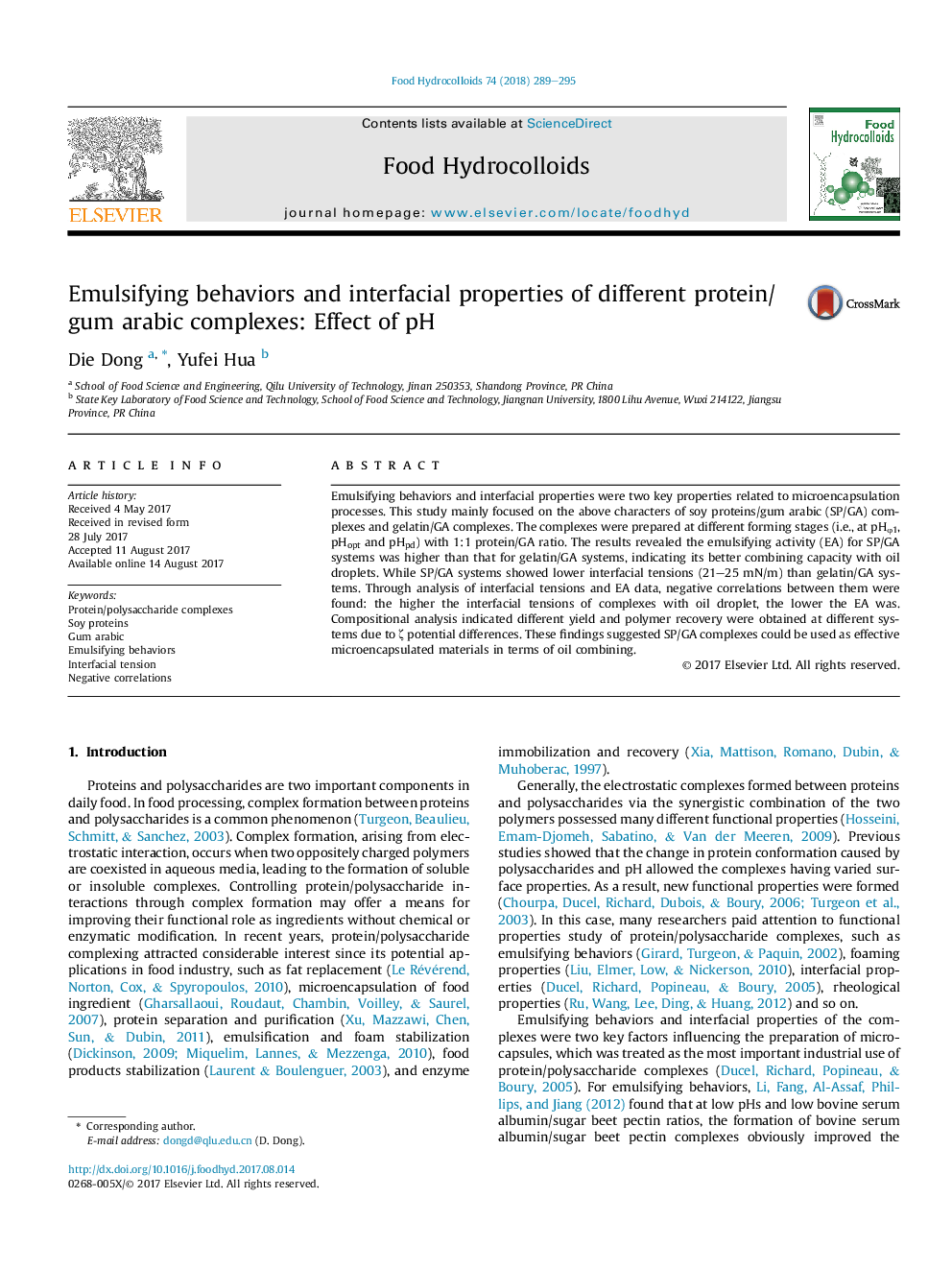| Article ID | Journal | Published Year | Pages | File Type |
|---|---|---|---|---|
| 4983750 | Food Hydrocolloids | 2018 | 7 Pages |
â¢pH and protein types influenced the complex formation greatly.â¢Emulsifying activity for SP/GA system was greater than that for gelatin/GA system.â¢Negative correlations between emulsifying activity and interfacial tension were found.â¢SP/GA complexes were effective microencapsulated materials in terms of oil combining capacity.
Emulsifying behaviors and interfacial properties were two key properties related to microencapsulation processes. This study mainly focused on the above characters of soy proteins/gum arabic (SP/GA) complexes and gelatin/GA complexes. The complexes were prepared at different forming stages (i.e., at pHÏ1, pHopt and pHpd) with 1:1 protein/GA ratio. The results revealed the emulsifying activity (EA) for SP/GA systems was higher than that for gelatin/GA systems, indicating its better combining capacity with oil droplets. While SP/GA systems showed lower interfacial tensions (21-25 mN/m) than gelatin/GA systems. Through analysis of interfacial tensions and EA data, negative correlations between them were found: the higher the interfacial tensions of complexes with oil droplet, the lower the EA was. Compositional analysis indicated different yield and polymer recovery were obtained at different systems due to ζ potential differences. These findings suggested SP/GA complexes could be used as effective microencapsulated materials in terms of oil combining.
Graphical abstractDownload high-res image (252KB)Download full-size image
